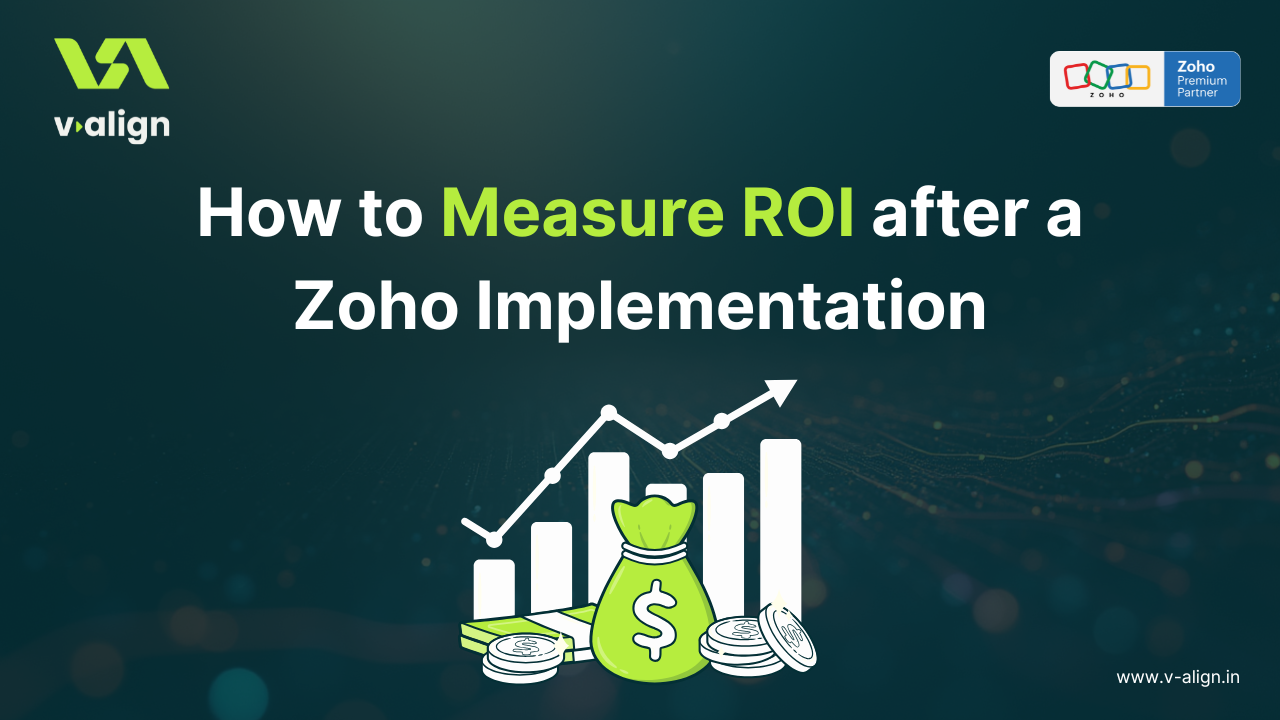
Implementing Zoho applications can transform your business by automating workflows, enhancing customer experience, and improving decision-making. However, once you’ve adopted Zoho, it’s essential to measure the return on investment (ROI) to understand the real impact on your business performance. This comprehensive guide will walk you through how to measure ROI after a Zoho implementation, covering key metrics, practical examples, and effective tracking methods to ensure you get the most value from your Zoho products.
A. Zoho CRM – Sales, Marketing, and Conversion Efficiency
Zoho CRM often serves as the foundation of a Zoho ecosystem. It affects lead management, deal tracking, and sales performance, making it one of the easiest areas to calculate ROI.
What Zoho CRM can do for your business
- Streamlined lead-to-deal process
- Automated follow-ups and task management
- Better forecasting accuracy
- Enhanced collaboration between marketing and sales
- Reduced leakage in the sales funnel
Metrics to Track:

- Lead Conversion Rate: (Leads converted / Total leads) before vs. after Zoho CRM: A higher rate means your sales team is closing more business from the same number of leads.
- Average Deal Size: Compare average revenue per closed deal: When your team has better insights, they naturally find more opportunities to upsell and cross-sell.
- Sales Cycle Length: Average number of days to close a deal: The quicker you close deals, the faster that money hits your bank account.
- Task Automation Count: Number of manual tasks replaced by workflows: Every automated task is time your high-value employees get back to focus on strategic work.
- Sales Forecast Accuracy: Difference between projected vs. actual revenue: Accurate forecasting means better resource planning and fewer end-of-quarter surprises.
Example:
Before Zoho CRM, your team closed 30% of leads. After automation and tracking dashboards, conversions rise to 42%. This 12% increase directly reflects improved sales productivity and better targeting.
B. Zoho Books – Financial Efficiency and Accuracy
Zoho Books simplifies accounting, automates invoicing, and cuts down on errors that cost money and time.
What Zoho Books can do for your business :
- Faster invoice generation and payment collection
- Reduced accounting errors
- Automated tax calculations and compliance
- Transparent financial reporting
Which Metrics to Track

- Invoice-to-Payment Cycle: Average days between invoice issue and payment received: When this number drops, your money moves faster, giving your business immediate, better cash flow.
- Manual Bookkeeping Hours Saved: Hours saved per month through automation: Every hour saved on tedious data entry is an hour your team can spend growing the business instead.
- Error Reduction Rate: Count of reconciliation errors before vs. after: Fewer mistakes mean less time wasted fixing problems and no more stressful financial surprises.
- Reporting Time Saved: Time to prepare P&L and Balance Sheet: Your finance team can stop drowning in spreadsheets and start giving you strategic insights right away.
Example:
If your finance team spent 40 hours per month reconciling statements and now spends 10 hours, that’s a 75% time reduction, resulting in direct payroll and efficiency gains.
C. Zoho Projects – Delivery, Collaboration, and Resource Utilization
Zoho Projects enhances project transparency, team coordination, and on-time delivery, leading to measurable productivity gains.
What Zoho Projects can do for your business :
- Reduced project delays
- Centralized task tracking
- Clear accountability across teams
- Efficient resource management
Which Metrics to Track
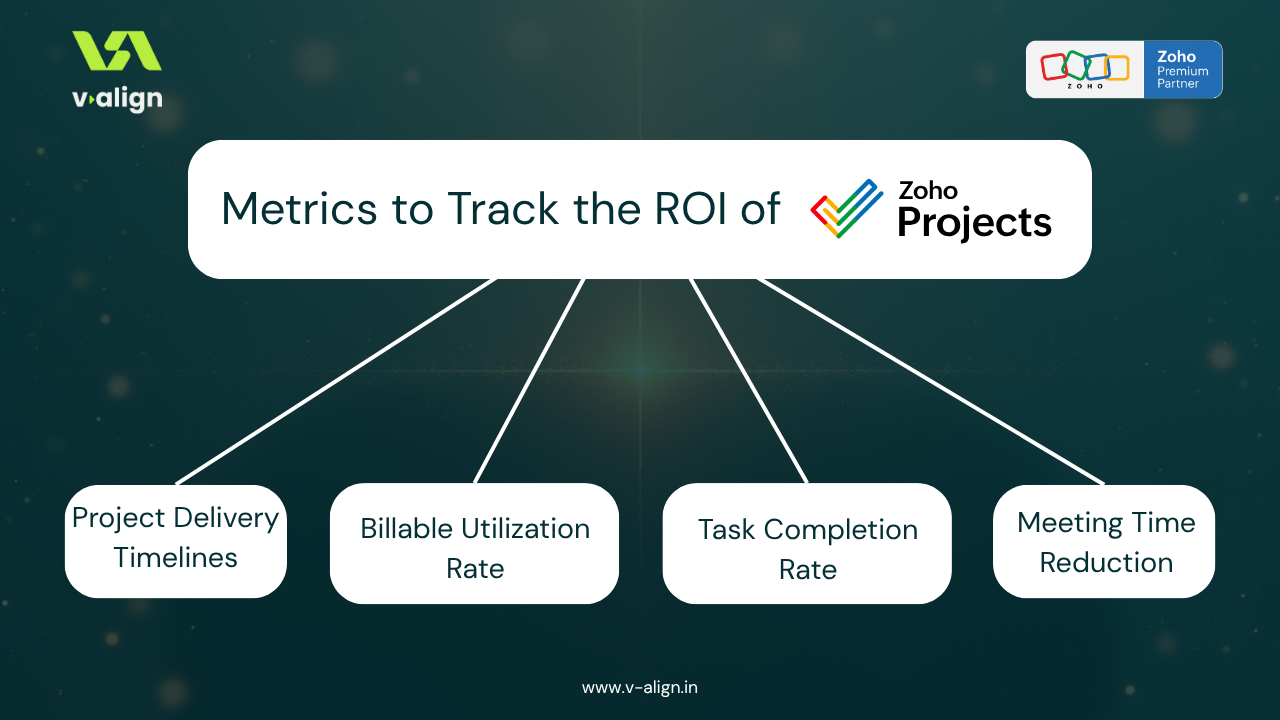
- Project Delivery Timelines: The Difference between the percentage of projects delivered on time before and after Zoho implementation indicates the operational efficiency.
- Billable Utilization Rate: Billable hours / Total available hours. This number indicates how effectively your team is contributing its time to generating actual revenue.
- Task Completion Rate: Closed tasks vs. created tasks: A high rate proves your team is actually delivering on the work.
- Meeting Time Reduction: Fewer status meetings due to dashboards: This gives your team back the hours they saved on unnecessary meetings, so they can focus on productive work.
Example:
If delayed projects dropped from 30% to 10% after using Zoho Projects, it shows higher delivery reliability, reducing rework, client churn, and opportunity loss.
D. Zoho Desk – Customer Service Quality and Retention
Customer experience directly affects retention and revenue. Zoho Desk allows for faster, data-driven support.
What Zoho Desk can do for your business :
- Improved response and resolution time
- Higher customer satisfaction scores
- Lower support cost per ticket
- Better visibility into agent performance
Which Metrics to Track:

- Average First Response Time: From ticket creation to first reply: The quicker you acknowledge a customer, the less likely they are to get frustrated and leave.
- Average Resolution Time: Total time to close the ticket: Shorter resolution times mean your team can handle more customers and solve problems at a lower cost.
- Customer Satisfaction (CSAT): Post-ticket surveys: This number is the clearest sign of how much your customers truly value the service you provide.
- Ticket Deflection Rate: (Self-help or automation tickets / total tickets): Every time a customer solves their own problem, you save your support team valuable time and resources.
Example:
If Zoho Desk automation, like canned responses, reduces average handling time from 12 minutes to 7 minutes per ticket, support capacity increases by about 70% without adding extra staff.
E. Zoho People – HR, Compliance, and Workforce Productivity
Zoho People automates HR operations, from leave approvals to appraisals, reducing HR overhead and improving employee engagement.
What Zoho People can do for your business?
- Reduced manual HR workload
- Improved payroll accuracy
- Enhanced employee engagement
- Streamlined onboarding and compliance
Which Metrics to Track
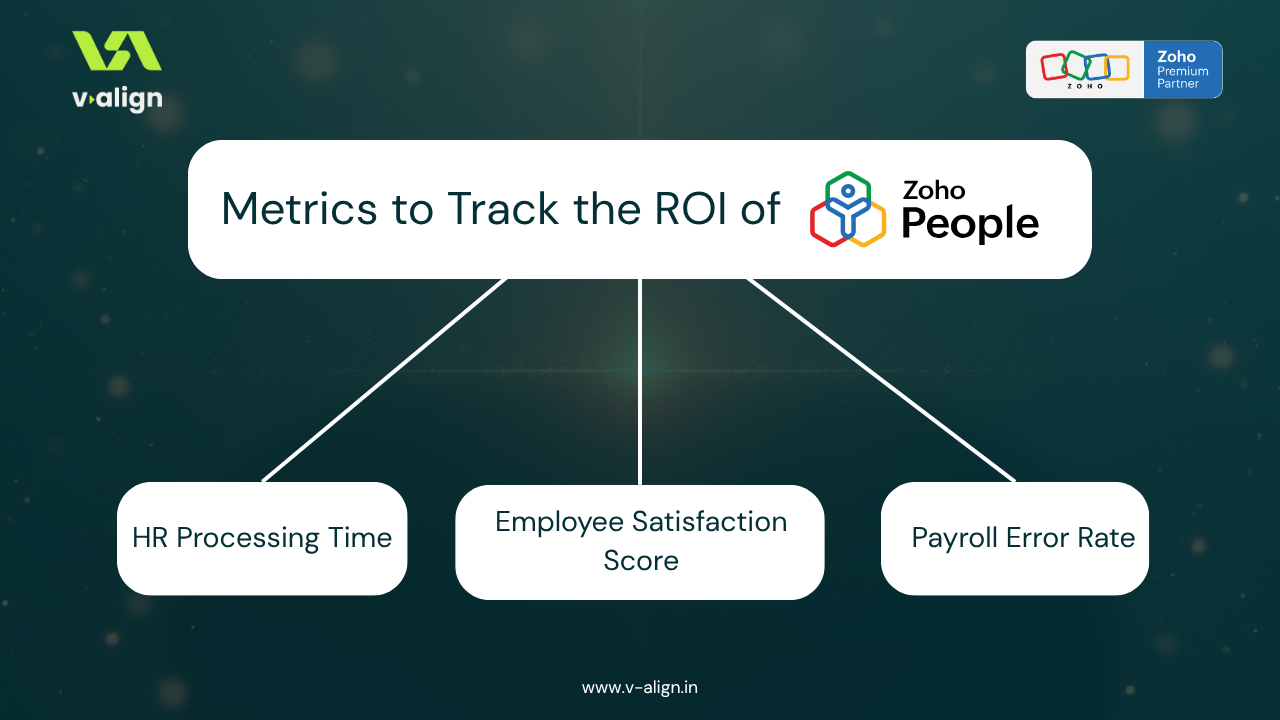
- HR Processing Time: Time taken for leave, payroll, or appraisal completion: Faster processing means your HR department is running like a finely tuned, cost-saving machine.
- Employee Satisfaction Score: Surveys before and after implementation: This score tells you exactly how much happier and more productive your employees are feeling.
- Payroll Error Rate: Number of miscalculations per month: Fewer errors translate directly into a happier workforce and less time wasted fixing avoidable mistakes.
Example:
An HR team that processes payroll in two days instead of five using Zoho People saves 3 days of administrative work monthly, increasing HR bandwidth by 60%.
F. Zoho Inventory – Operational and Fulfillment ROI
Zoho Inventory directly affects cash flow, order fulfillment, and stock optimization.
What Zoho Inventory can do for your business?
- Reduction in stock outs and overstocking
- Shorter fulfillment time
- Better order tracking accuracy
- Integration with CRM and Books
Which Metrics to Track
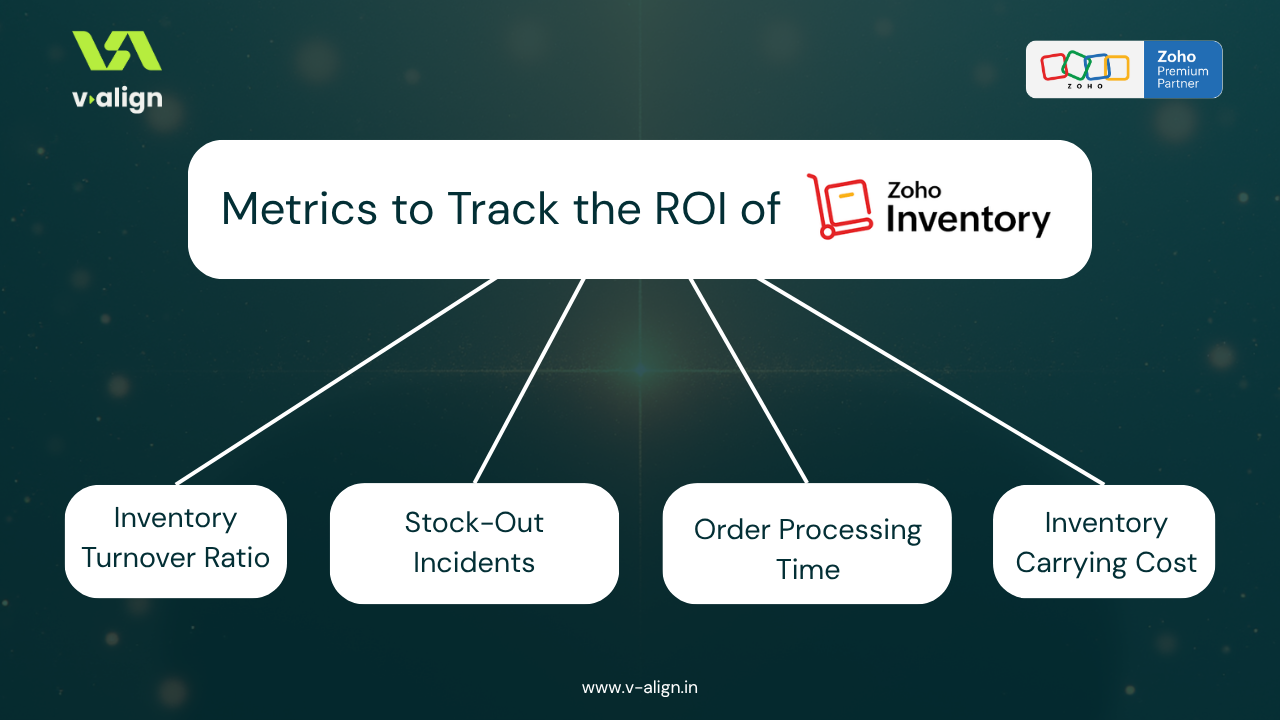
- Inventory Turnover Ratio: (COGS- Cost of Goods Sold / Average Inventory). A higher ratio proves you're selling products faster and not letting valuable capital sit dusty on shelves.
- Stock-Out Incidents: Frequency per quarter: Fewer stock-outs mean you never miss a sale and always keep your customer promises.
- Order Processing Time: Order received to dispatch: Cutting this time means quicker delivery, which directly translates to happier customers and repeat business.
- Inventory Carrying Cost: Cost savings from reduced overstock: You save real money by minimizing storage fees, insurance, and the risk of obsolete products
Example:
If automation cuts order processing time from 2 hours to 30 minutes, fulfillment efficiency improves four times, positively impacting customer satisfaction and repeat sales.
G. Zoho Analytics – The ROI Measurement Backbone
Zoho Analytics serves as the core of your Zoho ecosystem. It consolidates KPIs from CRM, Books, Projects, and more into real-time dashboards.
What Zoho Analytics can do for your business?
- Real-time cross-department data insights
- Faster, data-driven decision-making
- Reduced dependency on manual reporting tools
Which Metrics to Track
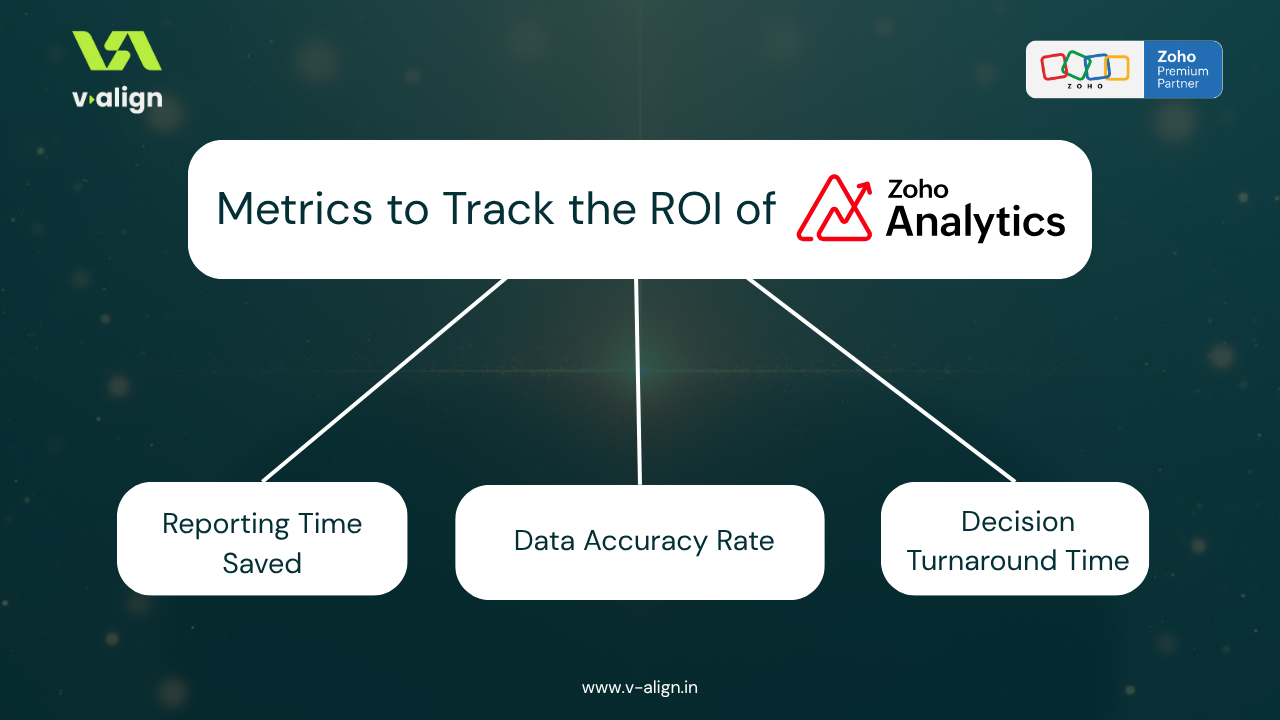
- Reporting Time Saved: Manual report preparation versus automated dashboards: Your team stops wasting hours building reports and starts using that time to analyze the data.
- Data Accuracy Rate: Error frequency across reports: Fewer errors in your data mean you can trust your insights and make reliable, confident decisions.
- Decision Turnaround Time: Time from report to action: The faster you move from seeing a problem to fixing it, the more agile and profitable your business becomes.
Example:
A management team that previously spent two days generating sales performance reports can now access them instantly through Zoho Analytics, saving dozens of hours each month.
Calculating Overall ROI
After gathering metrics from each product, calculate the overall Zoho ROI:
ROI (%) = (Total Gains from Zoho - Total Implementation Cost) ÷ Total Implementation Cost × 100
Example:
Total Zoho cost (licenses, setup, training) = ₹12,00,000
Total benefit (increased revenue + cost/time savings) = ₹30,00,000
ROI = ((30,00,000 - 12,00,000) ÷ 12,00,000) × 100 = 150% ROI
ROI is not static; it grows as your organization improves workflows. So you need to keep track of it. This approach ensures that Zoho remains an active, evolving investment rather than a one-time project.
Choosing the right partner can be the biggest ROI multiplier, and V-Align has proven this for over 15 years. With deep expertise across 50+ Zoho apps, including custom Creator development and advanced integrations (CRM, Books, Projects, Desk, People, Analytics, and more), we empower organizations to streamline workflows and unlock data-driven growth. Our global customers trust us because we make Zoho work smarter, faster, and more profitably.
